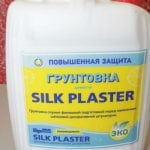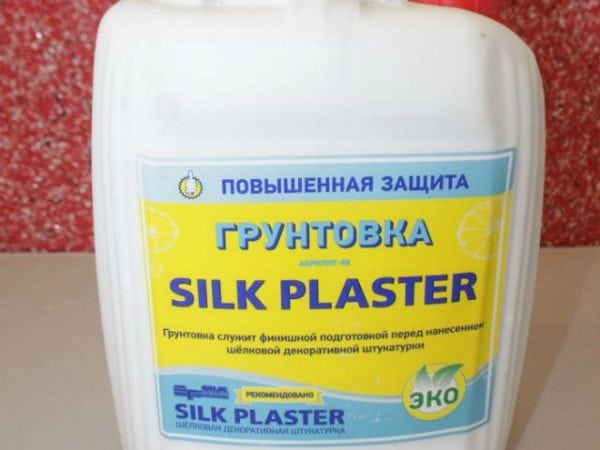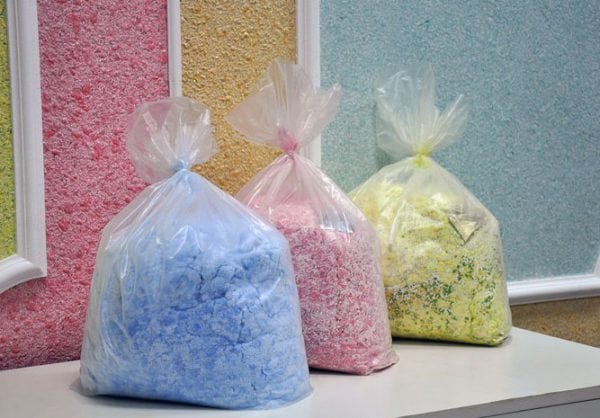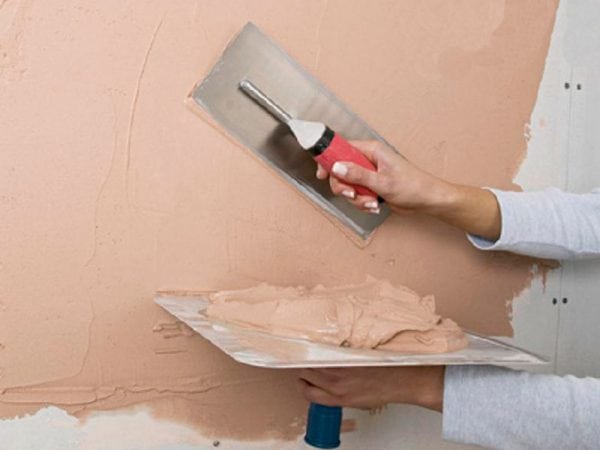Different types of materials are used as decorative wall decoration in residential and non-residential premises, and wallpapers are among the most popular. Modern wallpaper products include many different types of coatings, including the so-called "liquid" wallpaper. What primer is used for liquid wallpaper?
Before applying any decorative coating, specialists in matters of quality repair recommend that the surface be primed with a primer. This is necessary for several reasons. First of all, to improve the adhesion of the substrate to subsequent coatings. An important aspect is the protective properties of the primer, such as preventing the formation of mold and fungus, protection against excess moisture, increasing the strength and durability of the coating, vapor permeability, and so on.
to contents ↑General information about liquid wallpaper
Liquid wallpaper is more a decorative coating technology. In terms of quality, this material is more related to the variety of decorative plaster than to wallpaper materials in the classical sense. They are a mixture of cellulose and silk fibers, as well as various decorative fillers (dyes, structural particles).
To turn a dry mixture into a liquid (hence the name), traditional wallpaper glue is used. But such wallpapers are applied in a slightly different way: the mass is rubbed on the surface of the walls with a trowel, as if plastering.
The biggest advantage of this type of decorative coating is the ability to use on any plane. Interior designers prefer liquid wallpaper because of the wide range of tinting possibilities.
Clients choose this modern material because it is not inferior in quality to traditional wallpaper materials: the surface of the walls is warm and soft to the touch. Perhaps the only drawback to this type of finish is the cost of materials.
Foundation preparation
We have already determined that a primer is needed for liquid wallpaper. But which one is better to choose? And anyway, what kind of intermediate work needs to be done before applying a decorative coating? First things first.
- All old finishing materials must be removed from the walls: wallpaper, paint, whitewash, peeling plaster. It is also advisable to remove metal and plastic mounts wherever possible. In some cases liquid wallpaper can be applied to paint, this is written in a separate article.
- Although liquid wallpaper as a kind of textured plaster, not very “scrupulous” in the issue of perfectly smooth surfaces. Nevertheless, where it catches your eye, it is better to fix it. This means that very uneven walls are plastered to a flat, smooth surface.
- Potholes, cracks, pits - close up, projections more than 2 mm - even. Masters assure that neglect of this stage of work can affect the consumption of liquid wallpaper, and the quality of the finish as a whole.
- Before filling, the walls are treated with an antiseptic and a deep penetration primer.Priming takes place in at least two layers with application intervals of 3 hours. This is necessary in order to increase the strength and resistance of the base to various external influences, especially moisture.
- Next, the surface of the walls is puttied with a thick mixture. Putty can be left white or tinted to match the wallpaper. Whoever you like.
- The last, but no less important stage of preparatory work before finishing with liquid wallpaper is the priming of the putty walls. Why is this needed? Putty material is not highly resistant to moisture. And since “liquid” wallpapers will be applied on top, the putty will be saturated with moisture and swell. And all the work in vain!
Primer selection
The primer under the wallpaper is needed not only for high-quality adhesion (adhesion) of the coating and base. First of all, its task is to prevent the penetration of moisture. It is necessary to use the material where “high hydrophobicity” is indicated in the operational characteristics. It is recommended to process in 2-3 layers.
So that the protective coating does not lose its properties, each subsequent layer is applied only after the previous one has completely dried.
Under liquid wallpaper, the following primers are mainly used:
- Acrylic is the best option. Differs in easy drawing, fast drying, uniformity of a layer.
- Deeply penetrating - it is well absorbed into the base, after drying it forms a strong moisture-proof film. One of the advantages is the ability to smooth out imperfections in the base (pores, bumps).
- Quartz - are made using quartz dust. Give the treated surface a slight roughness, which in turn contributes to a higher quality application of a liquid decorative coating.
Choosing the appropriate materials, you must also consider the type of surface being trimmed. Manufacturers of building mixtures have already taken care of how to facilitate the choice of primer. They offer products for a specific type of base material. Also on sale are universal mixtures, the possibility of which is practically unlimited.







